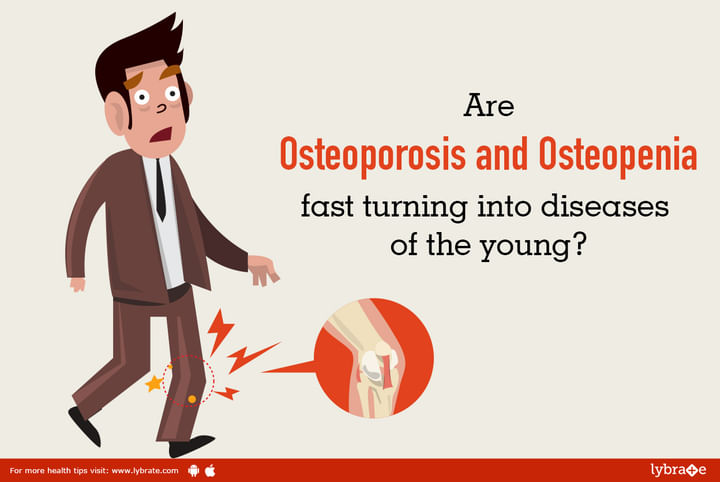Are Osteoporosis and Osteopenia fast turning into diseases of the young?
Why Osteoporosis and Osteopenia are fast turning into diseases of the young.
Did you know that osteoporosis causes more than 8.9 million fractures worldwide every year? What is frightening is many of these fractures are now taking place among the youth due to deficit diet and poor lifestyle coupled with genetic predisposition. Both osteoporosis and osteopenia are two forms of bone loss conditions, with the latter being a precursor to the former. To distinguish between the two a bone mineral density test is usually performed.
What is difference between Osteoporosis and Osteopenia?
A BMD (bone mineral density) T-score between -1 SD and -2.5 SD indicates osteopenia with a high chance of osteoporosis. On the other hand, a T-score of -2.5 SD and below stands for osteoporosis. A higher bone density (above -1SD) is usually indicative of stronger bones. Fragility index is more accurate way to assess risk of fractures.
In osteoporosis the bone loss or weakening of bones take place over a long period of time, and results in unexpected fractures and severe bone problems. Disfigurement, fractures in the spine, loss of mobility and independence are usual characteristics of this bone disease once it progresses further.
Prevention is better than cure, ALWAYS!
To keep bones strong and healthy, calcium and phosphate is continuously absorbed by the body. But after 30, the body’s ability to absorb calcium slows down and there’s a decrease in the production of new bones. In contrast, bone desorption (the process of transferring calcium from the bone to the blood) continues unabated.
When the body starts absorbing the store of calcium in the bones to meets its needs, it leads to calcium depletion and is one of the causes of weakening of the bone.
At present, the age limit (50-60 years) for osteoporosis has seen a drop with many younger people increasingly suffering from the ailment. Factors like unhealthy lifestyle, late-night shifts, smoking and alcohol consumption have been found to be the culprits behind the rise in osteoporosis cases among the young. Recent studies have identified vitamin D deficiency as a major factor for poor bone health and bone mass density in the young.
How to keep your bones strong and healthy? And manage Osteo - penia/porosis complications:
Bone loss can be prevented by adopting these very simple but effective ways:
- Exercising can help in building strong bones and muscles, while preventing bone loss.
- Maintaining a calcium intake of 1000 mg for pre-menopausal women and 1200 mg for women post menopause.
- Staying out in the sun for 20 minutes to produce requisite amount of Vitamin D for calcium absorption and using supplements of vitamin D.
- there are many safe medicines available to prevent and treat osteoporosis like alendronates, calcitonin, Parathyroid , teriparatide preparation etc.
- In osteoporosis induced /associated fractures we have to to modify implants to negate weak purchase of implants in bone and improve mobility.
We have been using these modifications in established osteopenia/porosis case in fractures treatment/joint replacement/ arthroscopic fixations and MIS spine fracture management.
'Consult'.



+1.svg)
